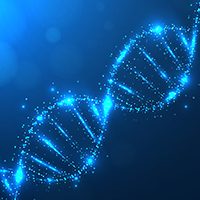DNA damage and repair in differentiation of stem cells and cells of connective cell lineages: A trigger or a complication?

Submitted: 24 February 2021
Accepted: 16 April 2021
Published: 3 May 2021
Accepted: 16 April 2021
Abstract Views: 1695
PDF: 978
HTML: 62
HTML: 62
Publisher's note
All claims expressed in this article are solely those of the authors and do not necessarily represent those of their affiliated organizations, or those of the publisher, the editors and the reviewers. Any product that may be evaluated in this article or claim that may be made by its manufacturer is not guaranteed or endorsed by the publisher.
All claims expressed in this article are solely those of the authors and do not necessarily represent those of their affiliated organizations, or those of the publisher, the editors and the reviewers. Any product that may be evaluated in this article or claim that may be made by its manufacturer is not guaranteed or endorsed by the publisher.
Similar Articles
- R Acevedo, A Cuadrado, C De la Torre, S Moreno Díaz de la Espina, Behaviour of ribosomal genes and nucleolar domains during activation in sugarcane (Saccharum officinarum L.) root primordia: from the unsoaked quiescent state to the steady state of proliferation , European Journal of Histochemistry: Vol. 46 No. 2 (2002)
- S Matsubara, D Matsubara, T Ishibashi, T Takizawa, Demonstration of glucose-6-phosphate dehydrogenase in rat Kupffer cells by a newly-developed ultrastructural enzyme-cytochemistry , European Journal of Histochemistry: Vol. 47 No. 2 (2003)
- G Natale, G Lazzeri, C Blandizzi, M Ferrucci, M Del Tacca, Differential distribution of transforming growth factor-a immunohistochemistry within whole gastric mucosa in rats , European Journal of Histochemistry: Vol. 47 No. 4 (2003)
- G Silvestrini, P Mocetti, R Di Grezia, S Berni, E Bonucci, Localization of the glucocorticoid receptor mRNA in cartilage and bone cells of the rat. An in situ hybridization study , European Journal of Histochemistry: Vol. 47 No. 3 (2003)
- Y Jin, A Sun, S Noriki, Y Imamura, M Fukuda, Detection of cancer clones in human colorectal adenoma as revealed by increased DNA instability and other bio-markers , European Journal of Histochemistry: Vol. 51 No. 1 (2007)
- C Sarasquete, E Gisbert, L Ribeiro, L Vieira, Mt Dinis, Glyconjugates in epidermal, branchial and digestive mucous cells and gastric glands of gilthead sea bream, Sparus aurata, Senegal sole, Solea senegalensis and Siberian sturgeon, Acipenser baeri development , European Journal of Histochemistry: Vol. 45 No. 3 (2001)
- Carlo Alberto Redi, Protein expression in mammalian cells: methods and protocols , European Journal of Histochemistry: Vol. 56 No. 3 (2012)
- President: Antonio Rossi, Proceedings of the XXXVI National Meeting of the Italian Society for the Study of Connective Tissues (SISC) , European Journal of Histochemistry: Vol. 60 No. s2 (2016): Italian Society for the Study of Connective Tissues (SISC) Meeting, Padua, 30 September - 1 October 2016
- Kotaro Yamagishi, Ichiro Tsukamoto, Fumihisa Nakamura, Kazuhiko Hashimoto, Kazuhiro Ohtani, Masao Akagi, Activation of the renin-angiotensin system in mice aggravates mechanical loading-induced knee osteoarthritis , European Journal of Histochemistry: Vol. 62 No. 3 (2018)
- Roman M. Kassa, Roberta Bonafede, Federico Boschi, Manuela Malatesta, Raffaella Mariotti, The role of mutated SOD1 gene in synaptic stripping and MHC class I expression following nerve axotomy in ALS murine model , European Journal of Histochemistry: Vol. 62 No. 2 (2018)
<< < 58 59 60 61 62 63 64 65 66 67 > >>
You may also start an advanced similarity search for this article.

 https://doi.org/10.4081/ejh.2021.3236
https://doi.org/10.4081/ejh.2021.3236










